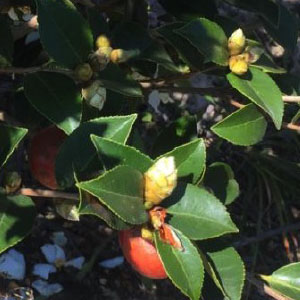Simulation study and field experiments on the optimal canopy shaking action for harvesting Camellia oleifera fruits

Published:30 June 2022
Abstract Views: 985
PDF: 486
HTML: 29
HTML: 29
Publisher's note
All claims expressed in this article are solely those of the authors and do not necessarily represent those of their affiliated organizations, or those of the publisher, the editors and the reviewers. Any product that may be evaluated in this article or claim that may be made by its manufacturer is not guaranteed or endorsed by the publisher.
All claims expressed in this article are solely those of the authors and do not necessarily represent those of their affiliated organizations, or those of the publisher, the editors and the reviewers. Any product that may be evaluated in this article or claim that may be made by its manufacturer is not guaranteed or endorsed by the publisher.
Similar Articles
- Qingyu Chen, Rui Kang, Naishuo Wei, Yunlei Fan, Zeyu Wang, Yu Chen, Jun Chen, Design and experiment optimize of the vibration harvesting machine of Lycium barbarum L. , Journal of Agricultural Engineering: Vol. 55 No. 4 (2024)
- Zhi He, Xinting Ding, Wei Hao, Kai Li, Weixin Gong, Zixu Li, Yongjie Cui, Calibration and experiments of discrete element flexible model parameters for kiwifruit stalk , Journal of Agricultural Engineering: Vol. 55 No. 4 (2024)
- Ziyan Fan, Lijun Li, Zicheng Gao, Fuzzy neural network PID control design of camellia fruit vibration picking manipulator , Journal of Agricultural Engineering: Vol. 54 No. 2 (2023)
- George Ashwehmbom Looh, Fangping Xie, Xiushan Wang, Augustine Ngiejungbwen Looh, Hamdaoui Hind, Grain kernel damage during threshing: a comprehensive review of theories and models , Journal of Agricultural Engineering: Vol. 56 No. 1 (2025)
- Alessandro Parenti, Paolo Spugnoli, Piernicola Masella, Lorenzo Guerrini, Stefano Benedettelli, Stefano Di Blasi, Comparison of grape harvesting and sorting methods on factors affecting the must quality , Journal of Agricultural Engineering: Vol. 46 No. 1 (2015)
- Xuhui Chen, Shilin Zhang, Jianxin Dong, Fang Liu, Xian Jia, Yuxiang Huang, Development of high-speed and precision metering device with gradient-feeding and control seed for soybean planting , Journal of Agricultural Engineering: Vol. 55 No. 3 (2024)
- Lei Liu, Xianliang Wang, Xiaokang Zhong, Xiangcai Zhang, Yuanle Geng, Hua Zhou, Tao Chen, Design and experiment of furrow side pick-up soil blade for wheat strip-till planter using the discrete element method , Journal of Agricultural Engineering: Vol. 55 No. 1 (2024)
- Yubing Sun, Yutong Zheng, Application of MOS gas sensors for detecting mechanical damage of tea plants , Journal of Agricultural Engineering: Vol. 55 No. 4 (2024)
- Shanwen Zhang, Yongyuan Sun, Su Lu, Li Wang, Sian Liu, Zhongliu Wang, Min Dai, Jicheng Gao, Hong Miao, Design and experiment of brush-roller ginkgo leaf picker for the dwarf dense planting mode , Journal of Agricultural Engineering: Vol. 54 No. 4 (2023)
- Emanuele Cerruto, Giuseppe Manetto, Giampaolo Schillaci, Vibration produced by hand-held olive electrical harvesters , Journal of Agricultural Engineering: Vol. 43 No. 2 (2012)
You may also start an advanced similarity search for this article.

 https://doi.org/10.4081/jae.2022.1245
https://doi.org/10.4081/jae.2022.1245 











